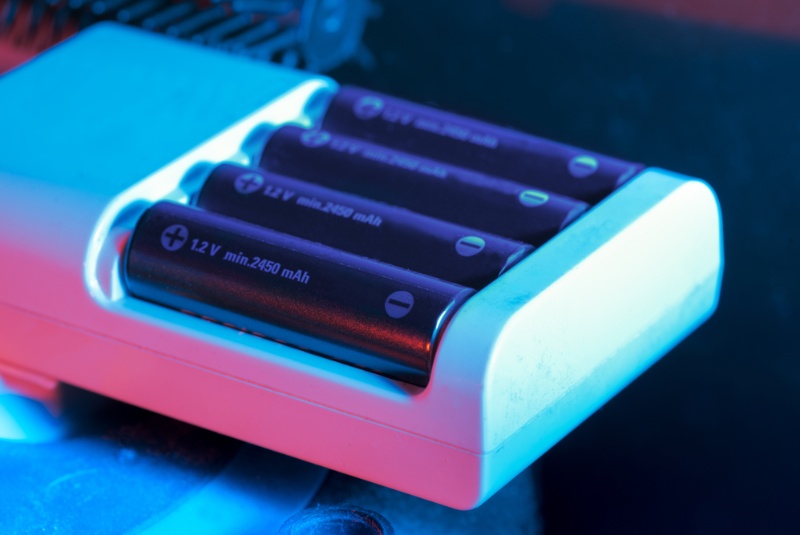Summer is the perfect time for outdoor adventures, and having reliable gear is essential for making the most of your experiences. Rechargeable batteries are a sustainable and cost-effective solution to power your outdoor equipment. This comprehensive guide provides essential tips and insights to help you choose the best rechargeable batteries for your summer outdoor gear, ensuring you have the power you need for all your activities.
Understanding Rechargeable Battery Types
There are several types of rechargeable batteries, each with its own advantages and applications. The most common types include Nickel-Metal Hydride (NiMH), Lithium-Ion (Li-ion), and Nickel-Cadmium (NiCd). NiMH batteries are widely used due to their balance of cost and performance. Li-ion batteries are known for their high energy density and longer lifespan but tend to be more expensive. NiCd batteries are durable and perform well in extreme temperatures but suffer from memory effect. Understanding the different types helps you choose the best rechargeable batteries for your specific needs.
Evaluating Battery Capacity
Battery capacity, measured in milliampere-hours (mAh), indicates how much charge a battery can hold. Higher capacity batteries provide longer run times for your devices. When selecting rechargeable batteries, consider the power requirements of your outdoor gear. For high-drain devices like GPS units, cameras, and flashlights, choose batteries with higher mAh ratings. Evaluating battery capacity ensures your gear operates efficiently for extended periods, reducing the need for frequent recharging.
Considering Battery Voltage
Battery voltage is another crucial factor that affects the performance of your outdoor gear. Most standard rechargeable batteries have a voltage of 1.2V, while single-use alkaline batteries typically have a voltage of 1.5V. Ensure that the rechargeable batteries you choose are compatible with your devices, as some equipment may require specific voltage levels for optimal performance. Considering battery voltage ensures your devices run smoothly and efficiently without any risk of damage.
Assessing Charge Cycles and Lifespan
The lifespan of a rechargeable battery is determined by the number of charge cycles it can endure before its performance degrades. A charge cycle is defined as a full discharge and recharge of the battery. Li-ion batteries generally offer the highest number of charge cycles, ranging from 300 to 500 cycles, while NiMH batteries typically offer around 300 cycles. Assessing charge cycles and lifespan helps you choose batteries that provide long-term reliability and value, ensuring your outdoor gear remains powered throughout the summer.
Evaluating Charging Time
Charging time varies between different types of rechargeable batteries and their respective chargers. Li-ion batteries usually charge faster than NiMH and NiCd batteries. Consider the charging needs of your outdoor gear and your available time for recharging. Fast chargers can significantly reduce charging times, allowing you to quickly replenish your batteries. Evaluating charging time ensures you have a convenient and efficient charging solution, keeping your gear ready for action at all times.
Exploring Temperature Performance
Outdoor adventures often involve exposure to various temperatures, which can affect battery performance. Li-ion batteries perform well in a wide range of temperatures, maintaining their efficiency in both hot and cold conditions. NiMH batteries can also handle different temperatures but may lose capacity in extreme cold. NiCd batteries are known for their resilience in extreme temperatures but are less environmentally friendly. Exploring temperature performance ensures you select batteries that can withstand the conditions of your outdoor activities, providing reliable power when you need it most.

Considering Environmental Impact
Choosing environmentally friendly rechargeable batteries is an important consideration for eco-conscious consumers. NiMH and Li-ion batteries are more environmentally friendly than NiCd batteries, which contain toxic cadmium. Additionally, rechargeable batteries reduce waste by replacing hundreds of single-use batteries over their lifespan. Considering the environmental impact ensures you select batteries that align with sustainable practices, reducing your ecological footprint while enjoying your outdoor adventures.
Evaluating Charger Compatibility
Selecting the right charger is essential for maintaining the performance and lifespan of your rechargeable batteries. Ensure that the charger is compatible with the type and size of the batteries you use. Some chargers offer smart features like automatic shut-off, trickle charging, and overcharge protection, which enhance safety and efficiency. Additionally, consider portable chargers or solar chargers for added convenience during outdoor activities. Evaluating charger compatibility ensures your batteries are charged safely and efficiently, ready to power your gear whenever needed.
Assessing Cost and Value
While rechargeable batteries and their chargers may have a higher upfront cost compared to single-use batteries, they offer significant long-term savings. Consider the overall value by comparing the lifespan, charge cycles, and performance of different batteries. High-quality rechargeable batteries can provide reliable power for years, reducing the need for frequent replacements. Assessing cost and value ensures you make a wise investment that balances initial expenses with long-term benefits, providing excellent value for your money.
Reading Reviews and Seeking Recommendations
Reading reviews and seeking recommendations from other outdoor enthusiasts can provide valuable insights into the performance and reliability of different rechargeable batteries. Look for detailed reviews that discuss battery capacity, charge cycles, charging time, and temperature performance. Professional reviews from trusted sources and consumer reports can offer in-depth analysis and comparisons. Additionally, seeking recommendations from friends, family, or online communities can help you identify popular and well-regarded models. Gathering information from multiple sources ensures you make an informed decision based on real-world experiences and expert opinions.
Testing Before Your Trip
Before embarking on your summer adventures, test your rechargeable batteries and gear to ensure everything works as expected. Charge your batteries fully and use them in your devices to check for any issues or inconsistencies in performance. This pre-trip testing helps you identify any potential problems and address them before you are out in the field. Testing before your trip ensures you have reliable power for your outdoor gear, avoiding unexpected disruptions during your activities.
Maintaining Your Rechargeable Batteries
Proper maintenance is essential for extending the lifespan and performance of your rechargeable batteries. Store batteries in a cool, dry place and avoid exposing them to extreme temperatures. Regularly clean the battery contacts to ensure a good connection. Follow the manufacturer’s guidelines for charging and discharging cycles to prevent overcharging or deep discharging, which can degrade battery performance. Maintaining your rechargeable batteries ensures they remain in optimal condition, providing reliable power for your outdoor gear over the long term.
Choosing the best rechargeable batteries for your summer outdoor gear involves understanding the different types, evaluating key factors like capacity, voltage, charge cycles, and temperature performance, and considering environmental impact and cost. By selecting the right charger, reading reviews, and testing your batteries before your trip, you can ensure reliable power for your adventures. Proper maintenance further extends the lifespan and efficiency of your batteries, making them a valuable investment for your outdoor activities. Use this guide to navigate the rechargeable battery market confidently and find the perfect power solution for your summer gear.




